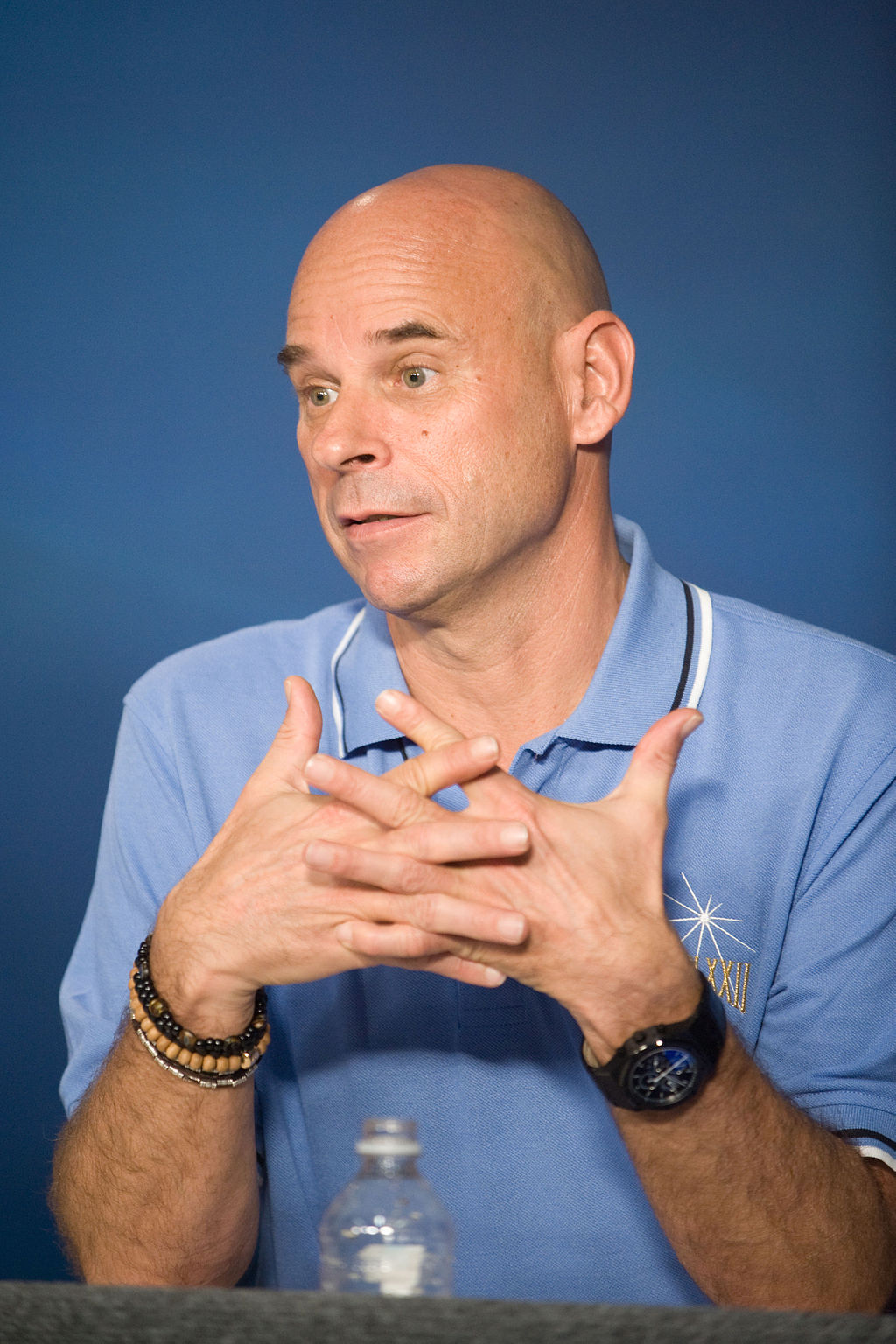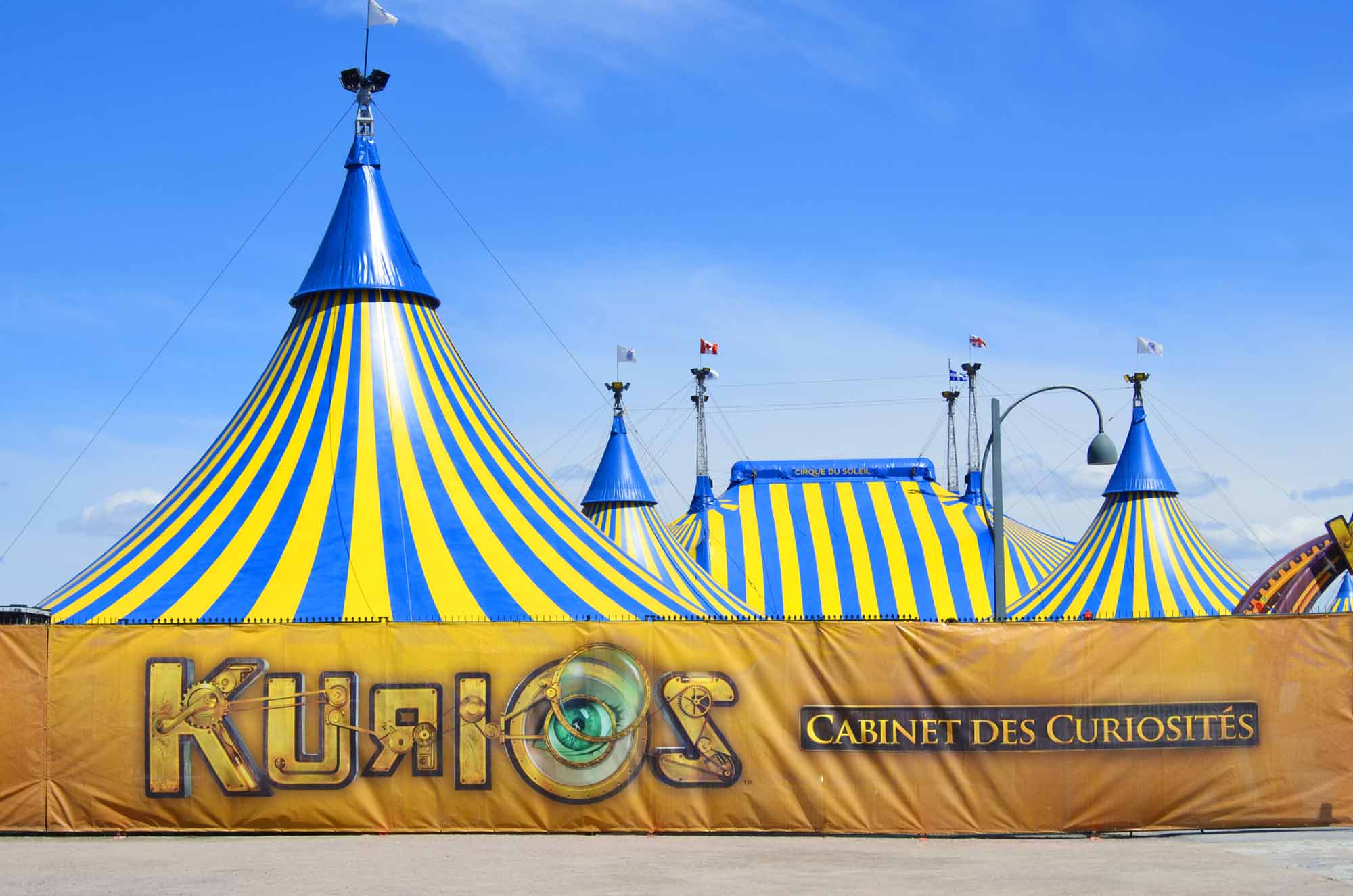
Early Career
Laliberté, who was attracted to the busker's lifestyle from a young age, probably owes something of his sense of fun and love of crowds to the family gatherings of his childhood. Both his parents loved to entertain. Like most street performers before him, Laliberté's skills were largely self-taught. In 1978, he travelled to Paris and acquired the basics of fire-breathing. In 1979, he began stilt-walking alongside Gilles Ste-Croix while the two were organizing activities for the Baie-Saint-Paul youth hostel (in the Charlevoix region of Québec).
Laliberté spent three winters (1979–81) working in Hawaii, where the thought of organizing large-scale festive events first occurred to him. The Cirque's "sun" symbol, according to Laliberté, owes much to the inspirational Hawaiian sun. In the summer of 1980 he joined Ste-Croix's stilt-walking theatre company Les Échassiers de Baie-Saint-Paul (The Stilt Walkers of Baie-Saint-Paul). The following year, Ste-Croix and Laliberté, along with stilt-walkers Serge Roy, Josée Bélanger and Carmen Ruest, founded the non-profit Club des talons hauts (High Heels Club) to promote stilt-walking events.
Cirque du Soleil
In 1982, Laliberté organized (with the help of Ste-Croix, Robert Lagueux and Hélène Dufresne) his first major event, La Fête foraine de Baie-Saint-Paul (The Baie-Saint-Paul Street Fair), which attracted street performers from across Canada and the US. The fair, which was presented for three successive years, usually ended with a large-scale show that gathered all the best acts together on one stage. These final shows were so popular and spectacular that the idea of a touring "circus without animals"arose.
In 1984 Laliberté, with financial help from the government of Québec, founded Cirque du Soleil. It toured Québec, and its big top had a capacity of 800 seats. The following year, the tour included stops in Ottawa, Toronto and Niagara Falls. In 1986, the Cirque produced a new show, La Magie continue/We Reinvent the Circus (1987), which toured Canada, the US and Europe. When it finally closed in 1990, the big top's capacity was 2,500 seats. Two years later, the Cirque would be running simultaneous shows on three continents.
Laliberté and his principal collaborators, Gilles Ste-Croix and Daniel Gauthier, guided the Cirque's phenomenal development and assembled the creative team that defined its singular style and aesthetic: director Franco Dragone, choreographer Debra Brown, costume designer Dominique Lemieux, composers René Dupéré and Benoit Jutras, and set and lighting designers Michel Crète and Luc Lafortune. Laliberté also established permanent Cirque productions in Las Vegas (Mystère in 1993 and O in 1998) and Orlando (La Nouba in 1998). Although Cirque du Soleil's international headquarters and studios remain in Montréal, Laliberté and his team also set up regional headquarters in Amsterdam (1994), Las Vegas (1997) and Singapore (1998).
One Drop Foundation and Space
In 2007, Laliberté announced the official launch of the One Drop Foundation, an organization whose goal is to make water accessible to everyone in the world. The foundation is funded by Laliberté (who committed $100 million), the Royal Bank of Canada and the Prince Albert II of Monaco Foundation, and is closely associated with Oxfam and the Cirque du Soleil.
Laliberté brought water issues to the world’s attention when he embarked on a “poetic social mission” to space. On 30 September 2009, he became the first Canadian space tourist, flying to the International Space Station on the Soyuz TMA-16 spacecraft with Expedition 21 from the Russian Federal Space Agency. Under the theme “Moving Stars and Earth for Water,” Laliberté led a 120-minute webcast on 9 October that featured artistic performances in 14 cities across the world as well as the space station.
Recognition
In 1997, Laliberté received the Order of Québec and in 2004, he received the Order of Canada. In 2000, his brainchild, the Cirque du Soleil, was awarded the Governor General's National Arts Centre Award.
Films have been made about the Cirque du Soleil include Jean-Philippe Duval, L'Odyssée Baroque (Societé Radio Canada/Canadian Broadcasting Corporation, 1994) and Nathalie Petrowski, Un Cirque en Amérique: La rancon de la gloire (ONF/NFB, 1988).

 Share on Facebook
Share on Facebook Share on X
Share on X Share by Email
Share by Email Share on Google Classroom
Share on Google Classroom

